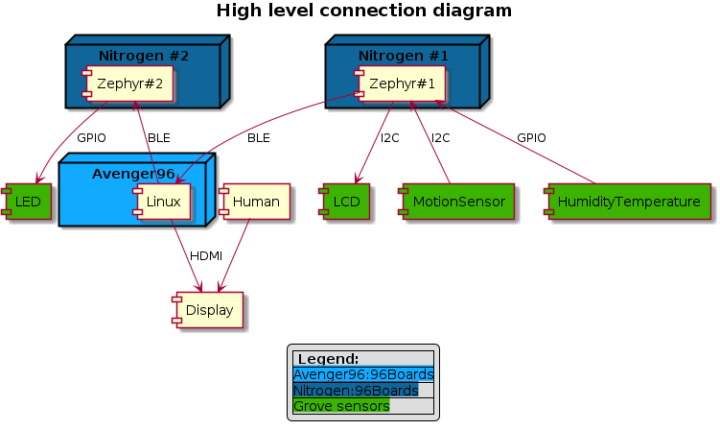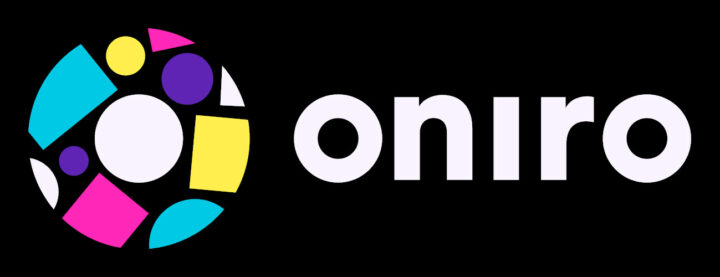Several of the embedded talks at FOSDEM 2022 mention the “Eclipse Oniro Project”. I had never heard about that project from the Eclipse Foundation, so let’s see how they describe it:
Oniro is an Eclipse Foundation project focused on the development of a distributed open source operating system for consumer devices, regardless of the brand, model, make.
Oniro is a compatible implementation for the global market of OpenHarmony, an open source operating system specified and hosted by the OpenAtom Foundation.
Designed with modularity in mind, Oniro offers greater levels of flexibility and application portability across the broad spectrum of consumer and IoT devices — from tiny embedded sensors and actuators, to feature rich smart appliances and mobile companions.
As a distributed and reusable collection of open source building blocks, Oniro enables compatibility with other open source technologies and ecosystems. Through close collaboration with projects and foundations such as OpenHarmony from the OpenAtom Foundation, Yocto project and OpenChain from the Linux Foundation, Oniro helps build bridges rather than creating a digital divide.
If OpenHarmony rings a bell it’s because it’s the open-source version of Huawei’s HarmonyOS operating system, and is now managed by the OpenAtom Foundation. The description confuses me even more, and I’m still not sure what it is for, but member companies and organizations include Linaro, SECO embedded systems company, as well as lesser-known companies like Synesthesia, and of course Huawei. So let’s check the project’s resources if we can find more details.
First, it’s fairly new as the working group was only established on October 26th, 2021 after a year of work from members. We’ve got more clarity with regards to the goals as well:
The mission of the Eclipse Oniro Top-Level Project is the design, development, production and maintenance of an open source software platform, having an operating system, an ADK/SDK, standard APIs and basic applications, like UI, as core elements, targeting different industries thanks to a next generation multi-kernel architecture, that simplifies the existing landscape of complex systems, and its deployment across a wide range of devices.
So basically I understand Oniro aims to provide a vendor-agnostic platform to develop software that runs on various operating systems and hardware in order to reduce fragmentation in the consumer and IoT device industry. I will not insert an xkcd meme here, but you know what I mean. Right now, Oniro relies on the Poky/Yocto Project build system and supports three operating systems with Linux, ZephyrOS, and FreeRTOS allowing it to be used in application processors and microcontrollers.
The documentation lists seven hardware platforms supported by Oniro projects:
- 96Boards Avenger96
- 96Boards Nitrogen
- SBC-B68-eNUC SECO
- SBC-C61 SECO
- Raspberry Pi 4 Model B
- Arduino Nano 33 BLE
- nRF52840 DK

The Eclipse Oniro Project also integrates its various components into a representative use-case called a Blueprint, and at the time of writing there are five Blueprints:
- Smart Panel Blueprint
- DoorLock Blueprint
- TouchPanel Blueprint
- Transparent Gateway Blueprint – A Proof of Concept (PoC) IoT gateway that can be used as the communication hub in a smart home
- Vending Machine Blueprint
The FOSDEM 2022 talk “GPIO across Linux and Zephyr kernels” by Bernhard Rosenkränzer will showcase the Door Lock Blueprint and show how it’s possible to share code between a system using Zephyr with a Cortex-M, and another Linux on a Cortex-A. This code reuse should be beneficial since a simple piece of code can be fully tested and work for multiple platforms / operating systems, instead of having two separate trees where, for instance, one bug may be fixed in a tree, but not in the other tree.

Jean-Luc started CNX Software in 2010 as a part-time endeavor, before quitting his job as a software engineering manager, and starting to write daily news, and reviews full time later in 2011.
Support CNX Software! Donate via cryptocurrencies, become a Patron on Patreon, or purchase goods on Amazon or Aliexpress





After a quick look at the provided links, I must say that am at least puzzled by the project. I wonder if it is only a try to “sell” the Huawei HarmonyOS to other market segments or another shoot at the “one ring to rule them all” that will miserably fail
Lets see… before putting efforts in it
Let me start by thanking you for writing about Oniro.
Oniro is transitioning from the previous set up, led by a group of companies having Huawei as main player, to an Eclipse Foundation project (community driven) supported by a Working Group (ecosystem of organizations). Like in any complex transition, some things are not completely settled and won’t be for some time.
Some aspects of this transition, together with technical descriptions of the platform capabilities and descriptions of use cases, will be explained in the different talks related with Oniro at FOSDEM 2022:
I think that these videos, taken during EclipseCon 2021, will help your readers to get a better understanding of what Oniro is about:
We just launched the Steering Committee of the Working Group yesterday, for instance. The initial code contribution To Eclipse Foundation is being evaluated from the IP/license point of view as we speak. The infrastructure, services and tools will follow. It is a process that will take a few more weeks/months to be completed. Meanwhile, the Oniro engineers are heavily working on the platform.
So yes, we can, should and …. will improve on the messaging front.
Let me provide a couple of additional comments that might help in understanding the relation between Oniro and OpenHarmony.
In a nutshell, OpenHarmony (from OpenAtom) and Oniro (from Eclipse Foundation) will be two different open source implementation of a set of open, aligned and shared specifications. The dream is simple to state and very hard to achieve… a developer who has created an app or a service for one platform can run it in the other one with little or no effort. We are pursuing to get one step further compared to what happens today in the enterprise world with Linux distros, for instance. At the same time, we want to achieve for IoT what is currency in that enterprise industry for Linux based OS, a truly global market.
The Eclipse Foundation have a long and successful history on defining open specifications on a code-first/vendor neutral basis, supported by open source reference implementations, together with a compatibility program, to drive industry adoption of the solutions developed by our communities. Can we leverage this background and successfully apply it to this IoT&Edge platform (Oniro platform)? That is the challenge we will be facing.
Went through the links and some of the documentation and… Well you convienced me that my initial feeling was right.
Is it just me, or is it a sponsored article?
If it’s a sponsored article it should be disclosed. Otherwise it maybe illegal according to Annex 1 of the Unfair Commercial Practice Directive.
It’s just you…